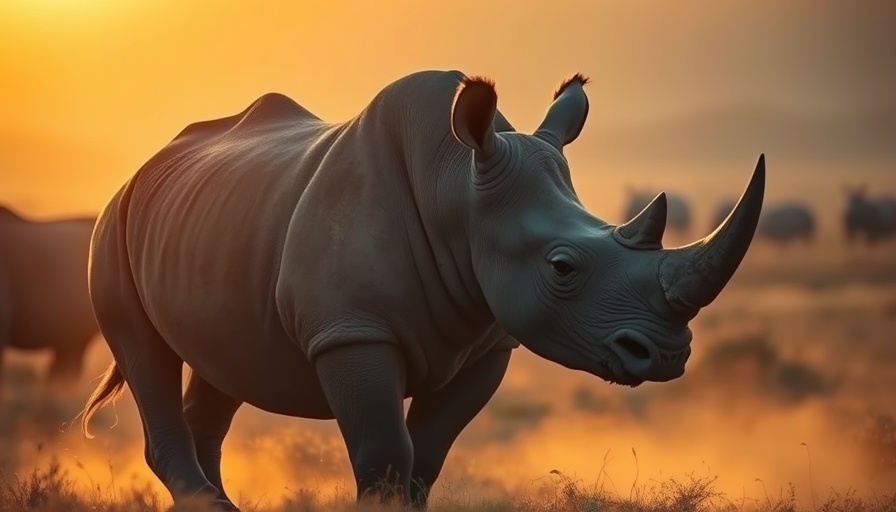
Namibia's Bold Move: Banning Drones in Etosha National Park
In an effort to safeguard its wildlife, Namibia’s Ministry of Environment, Forestry and Tourism has put a full stop to drone operations within Etosha National Park. This ban comes amid rising concerns about poaching—a sensitive and critical issue for conservation efforts across the region. The Black Rhino population in Etosha, who finds refuge in this expansive park, represents 72% of Namibia's total. However, poaching incidents have surged, with reports indicating 19 rhinos killed in just the first quarter of 2024.
Understanding the Context: The Rise of Poaching
The dramatic uptick in rhino deaths has prompted this decisive action. Previously, drones were permitted but under strict regulations; however, their unauthorized use has escalated. Drones provide poachers with an advantage, allowing them to track the movements of these endangered creatures over large distances without detection. By banning drones, park authorities aim to cut down on disturbances both to wildlife and tourists, ensuring that wildlife conservation remains at the forefront.
The Involvement of Technology in Modern Poaching
Technology is often seen as a double-edged sword in conservation. While drones can assist in monitoring wildlife and even help combat illegal poaching, their misuse poses significant threats. For example, poachers can exploit drones to pinpoint locations of rhinos easily. Countries across Africa, including those with substantial rhino populations like South Africa, face similar challenges. As regions grapple with modern threats to beloved species, the need for proactive management strategies that align technology with conservation goals becomes ever more crucial. The ban on drones reflects a response to these evolving threats.
Broader Implications for Travel and Tourists
This policy change will resonate with travelers and adventure seekers alike. Tourists who plan visits to Etosha National Park can expect a more tranquil experience as poaching activities are curbed. With a distinct focus on protecting wildlife, visitors may find themselves amid situations that prioritize both conservation and the beauty of nature without the interference of modern technology. It allows for a more authentic safari experience, emphasizing the connections people can make with the land and its inhabitants.
Future of Conservation: How Tourists Can Contribute
Tourists visiting Namibia and Etosha National Park can be ambassadors of conservation by adhering to guidelines that protect wildlife. Support for local ecotourism and participation in conservation efforts upon visiting not only contributes to preserving these magnificent creatures but also enriches travelers’ understanding of the ecosystem. As the park invites global visitors, the potential for interactive and meaningful engagements with nature will not just enhance travel experiences but also reinforce global efforts against poaching.
What You Can Do: Take Action for Conservation
As a travel enthusiast, you have the power to contribute positively to the places you visit. Support ethical wildlife sanctuaries and local conservation programs in Namibia and beyond. By spreading awareness, making conscious travel choices, and engaging in local eco-tours, you help amplify the message of conservation. Every traveler can make a difference—let’s commit to responsible tourism and advocate for the safety of wildlife.
 Add Row
Add Row  Add
Add 




Write A Comment